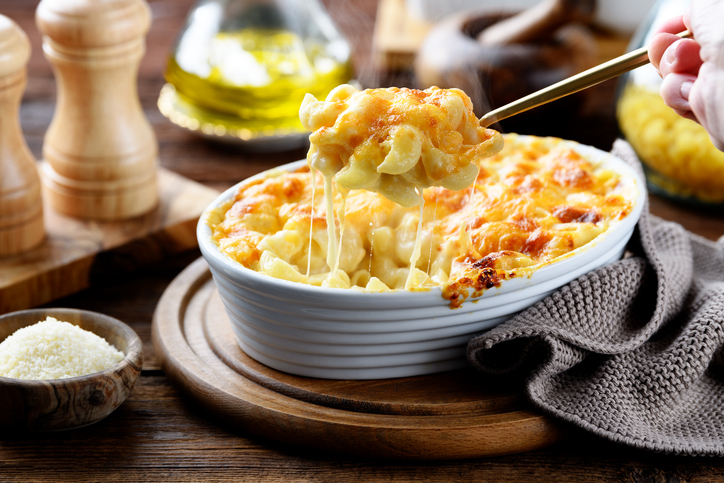When the temperature drops, comfort food becomes its own kind of therapy. The smell of soup simmering or the first bite of warm pasta feels grounding — but it doesn’t have to leave you sluggish. With a few smart swaps, you can have all the cozy and none of the crash.
Start with smarter swaps
Rich doesn’t have to mean heavy. Blend cooked cauliflower or white beans into soups to get that creamy texture with a dose of protein and fiber. The extra fiber helps you feel full longer and keeps your blood sugar steady. The Mayo Clinic notes that high-fiber foods help “stabilize blood sugar levels and sustain energy throughout the day” [1].
For casseroles and pasta, try a half-and-half mix of whole-grain noodles and vegetables. Whole grains have been linked to better energy and heart health thanks to their steady-release carbs [2].
Warm carbs, cool energy
Sweet potatoes, lentils, and barley are all star comfort ingredients that give lasting fuel without the energy dip. The USDA points out that these complex carbs offer fiber, vitamins, and slow-burning energy your body actually loves [3].
Lighten up without missing out
Instead of cream or butter-heavy sauces, use olive oil or Greek yogurt for flavor and richness. Olive oil contains healthy fats that support brain and heart health, while Greek yogurt adds creaminess and protein [4].
Comfort through connection
Maybe the best part of comfort food isn’t the food at all — it’s the togetherness. Research from Johns Hopkins Medicine shows that cooking and eating with others can reduce stress, boost creativity, and foster connection [5].
Comfort food can still be comfort — just smarter, lighter, and made to keep you feeling good long after the dishes are done.
Sources:
[1] Mayo Clinic. “Dietary Fiber: Essential for a Healthy Diet.” https://www.mayoclinic.org/healthy-lifestyle/nutrition-and-healthy-eating/in-depth/fiber/art-20043983
[2] Harvard T.H. Chan School of Public Health. “Whole Grains.” https://www.hsph.harvard.edu/nutritionsource/whole-grains/
[3] U.S. Department of Agriculture. “Grains.” MyPlate.gov. https://www.myplate.gov/eat-healthy/grains
[4] U.S. Department of Agriculture. “More Key Topics: Oils.” MyPlate.gov. https://www.myplate.gov/eat-healthy/more-key-topics
[5] Johns Hopkins Medicine. “Family Meals: Can They Make You Healthier?” https://www.hopkinsmedicine.org/health/wellness-and-prevention/family-meals-can-they-make-you-healthier




